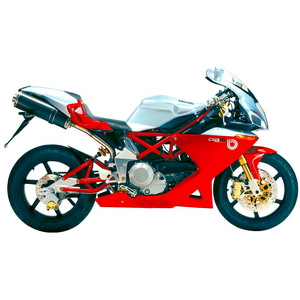Bimota DB5 (2005-2017): A Testament to Italian Motorcycling Passion
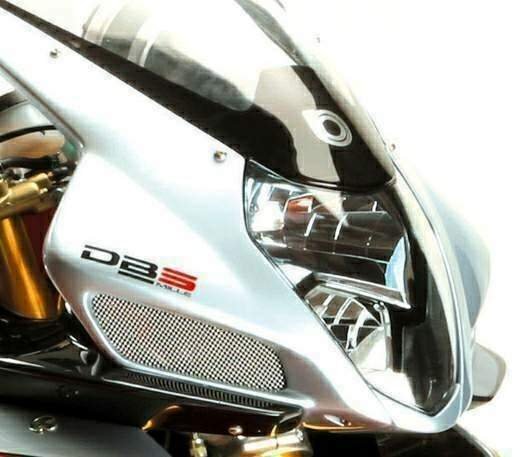
Introduction
The Bimota DB5 isn’t just a motorcycle—it’s a declaration of artistry, engineering obsession, and the unrelenting pursuit of riding nirvana. Produced from 2005 to 2017, this Italian thoroughbred blends the raw charisma of Ducati’s L-twin engines with Bimota’s signature chassis wizardry. Designed by Sergio Robbiano as part of Bimota’s revival, the DB5 generation redefined what a "boutique" sportbike could be: lightweight, mechanically theatrical, and dripping with exclusivity. Having thrown a leg over a 2014 DB5 E Desiderio, I can confirm this isn’t a bike that whispers its intentions—it roars them through titanium pipes.
Design & Aesthetics: Form Follows Fury
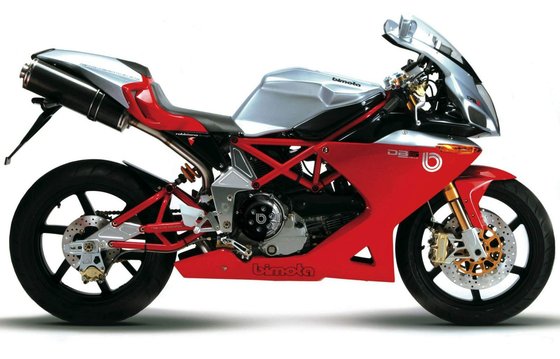
Bimota’s design philosophy has always been equal parts form and function, and the DB5 is no exception. The trellis frame—crafted from chrome-molybdenum steel tubes—is a visual masterpiece, merging industrial rigidity with organic curves. But the star of the show is the composite swingarm: a hybrid of steel tubing and machined aircraft-grade alloy plates. This isn’t just engineering porn; it’s a functional sculpture that reduces unsprung weight while adding lateral stiffness.
The DB5’s bodywork walks a tightrope between aggression and elegance. The front fairing wraps tightly around stacked headlights and twin air intakes, yet leaves the 992cc (later 1078cc) Ducati engine fully exposed—a nod to Bimota’s confidence in mechanical beauty. On later models like the DB5R, carbon fiber bodywork and gold-anodized Öhlins forks scream race-ready sophistication. Limited editions, such as the Borsalino variant with matte black paint and gold accents, elevate the DB5 into wearable art.
Performance & Handling: The Dance of Light and Power
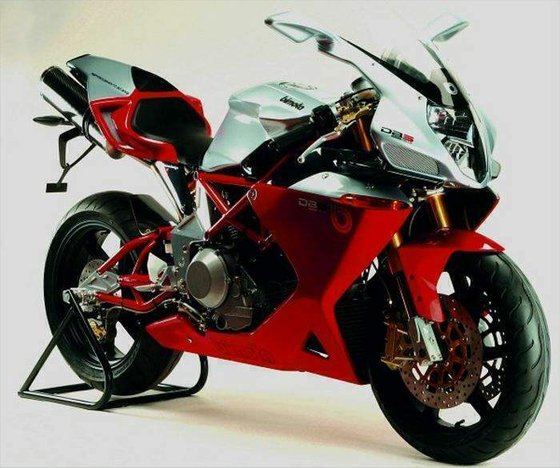
Engine: Ducati’s Heart, Bimota’s Soul
At its core beats Ducati’s air-cooled L-twin, a 992cc (60.5 cu in) desmodromic powerhouse in early models, later bumped to 1078cc (65.8 cu in). The engine’s character is unmistakably Ducati: a torque-rich bark at 5,500 RPM (85–105 Nm / 62.7–77.4 lb-ft) and a crescendo of 92–98 HP (67.2–71.5 kW) at 7,500–8,500 RPM. On the road, this translates to relentless midrange pull—ideal for carving alpine passes or overtaking traffic with a flick of the wrist.
The DB5 isn’t about outright speed (though 230 km/h / 142.9 mph is no joke). It’s about delivery: the way the twin-spark motor churns out torque like a tractor at low revs, then transforms into a wailing track weapon above 6,000 RPM. The dry multiplate clutch (a signature of the "R" models) adds a mechanical rawness, while fuel injection ensures throttle response as sharp as a stiletto.
Chassis: Precision as a Religion
Weighing just 156–185 kg (343.9–407.9 lbs) dry, the DB5 feels like a featherweight in corners. The 24-degree rake and 100–108 mm (3.9–4.3 in) trail strike a perfect balance between quick steering and stability. Pair this with fully adjustable Öhlins or Marzocchi suspension, and you’ve got a bike that pivots into hairpins with telepathic accuracy.
Braking is equally theatrical. Early models used dual 298mm Brembo discs with 4-piston calipers, while the DB5R upgraded to 320mm rotors. Even at a 140 km/h (87 mph) sweep into a decreasing-radius turn, the setup inspires confidence—no fade, just relentless stopping power.
Riding Experience: A Symphony for the Senses
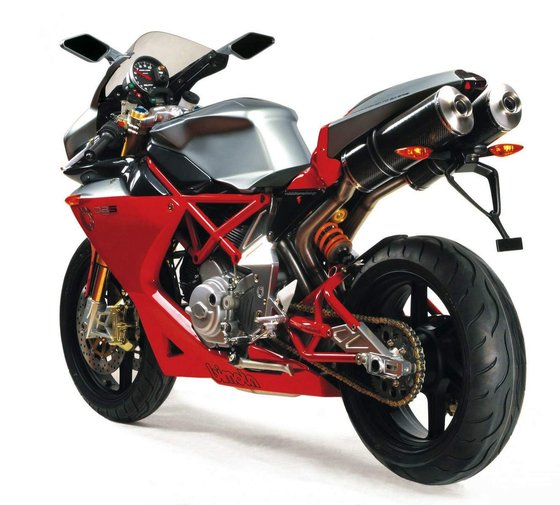
Sliding into the DB5’s 790–810 mm (31.1–31.9 in) saddle feels like strapping into a race car. The clip-ons are low and aggressive, but the seat-to-peg relationship avoids the crippling ergonomics of pure superbikes. This is a bike that rewards finesse: the V-twin’s vibrations massage your palms at idle, while the chassis communicates every ripple in the asphalt.
Accelerating hard out of a corner, the DB5’s 0–100 km/h (0–62 mph) time of 3.0 seconds feels visceral, not synthetic. The torque curve is your best friend here, allowing you to short-shift and surf the midrange. Yet, the real magic happens at part-throttle—the DB5 is as happy threading through city traffic as it is devouring backroads.
Competition: How the DB5 Stacks Up
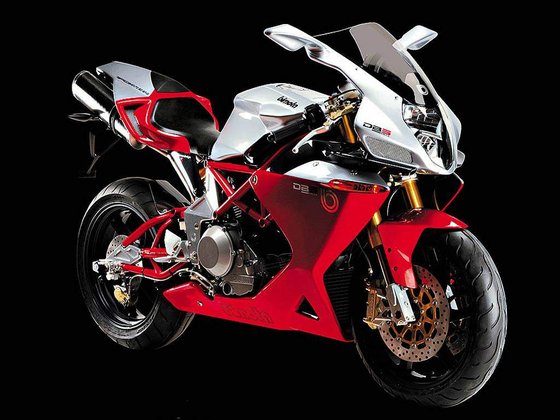
The DB5’s closest rivals are as much about emotion as performance:
-
Ducati Monster S4R
Sharing the same 996cc Desmo engine, the Monster trades the DB5’s precision for streetfighter swagger. It’s more practical (and affordable) but lacks Bimota’s exclusivity and razor-sharp chassis. -
MV Agusta Brutale 1090
The Brutale counters with a jewel-like 1078cc inline-four and avant-garde styling. It’s faster in a straight line but heavier (183 kg / 403 lbs) and less tactile in corners. -
Suzuki GSX-R750
The Gixxer is a track-day bargain with 148 HP, but it’s a sterile experience compared to the DB5’s analog thrills.
The DB5’s trump card? Exclusivity. With production numbers in the hundreds (not thousands), this isn’t a bike you’ll see at every café. It’s for riders who value craftsmanship over convenience.
Maintenance: Keeping the Passion Alive
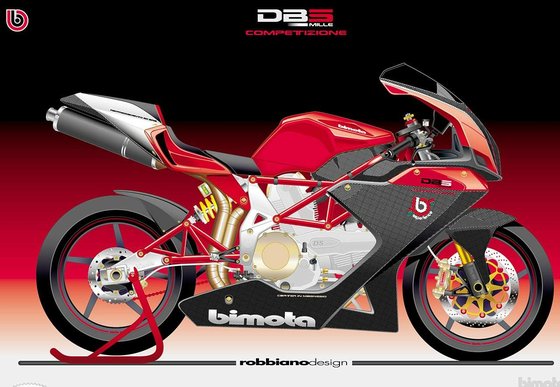
Owning a DB5 is a labor of love, but MOTOPARTS.store has you covered:
-
Desmo Service
The Ducati engine’s desmodromic valves need adjustment every 12,000 km (7,456 miles). Upgrade to high-performance valve kits for sharper revving. -
Suspension Tuning
Öhlins forks and shocks benefit from periodic fluid changes. Consider stiffer springs for track use. -
Brake Upgrades
Swap stock pads for sintered Brembo units (e.g., SC Series) to combat fade during spirited rides. -
Exhaust Systems
The DB5’s stock cans are heavy. A lightweight titanium system (like Zard’s 2-1-2) saves 5+ kg (11 lbs) and unleashes the L-twin’s full snarl. -
Frame Preservation
Chromoly frames resist rust, but apply anti-corrosion coatings if riding in wet climates.
Conclusion: The Legacy of a Modern Classic
The Bimota DB5 isn’t perfect. It’s expensive, impractical, and demands your undivided attention. But that’s the point. In an era of electronic rider aids and homogenized design, the DB5 remains a defiant celebration of analog motorcycling—a machine that connects rider, road, and rebellion. Whether you’re hunting for Öhlins parts or a carbon fiber fairing, MOTOPARTS.store ensures your DB5 continues to turn heads and shred corners.
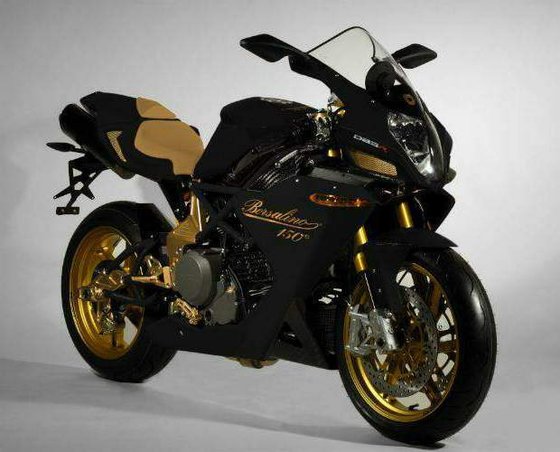


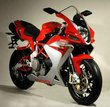



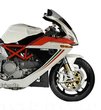









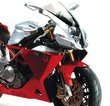







Specifications sheet
| Engine | |
|---|---|
| Stroke: | Four-stroke |
| Max power: | 98 kW | 131.0 hp |
| Max torque: | 105 Nm |
| Fuel system: | Fuel Injection (Magneti Marelli 45mm throttle body) |
| Lubrication: | Wet sump |
| Max power @: | 8500 rpm |
| Displacement: | 1078 ccm |
| Max torque @: | 5500 rpm |
| Configuration: | V |
| Cooling system: | Oil & air |
| Compression ratio: | 10.5:1 |
| Number of cylinders: | 2 |
| Valves per cylinder: | 2 |
| Dimensions | |
|---|---|
| Wheelbase: | 1430 mm (56.3 in) |
| Dry weight: | 169 |
| Wet weight: | 189 |
| Seat height: | 810 mm (31.9 in) |
| Overall width: | 830 mm (32.7 in) |
| Overall height: | 1110 mm (43.7 in) |
| Overall length: | 2050 mm (80.7 in) |
| Ground clearance: | 130 mm (5.1 in) |
| Fuel tank capacity: | 16 L (4.2 US gal) |
| Drivetrain | |
|---|---|
| Final drive: | chain |
| Chain length: | 118 |
| Transmission: | 6-speed |
| Rear sprocket: | 47 |
| Front sprocket: | 15 |
| Maintenance | |
|---|---|
| Rear tire: | 180/55-17 |
| Engine oil: | 10W40 |
| Front tire: | 120/70-17 |
| Brake fluid: | DOT 4 |
| Spark plugs: | NGK DCPR8E or NGK DCPR8EIX |
| Spark plug gap: | 0.9 |
| Engine oil capacity: | 3.0 |
| Engine oil change interval: | Every 5000 km or 2 years |
| Valve clearance (intake, cold): | 0.10–0.20 mm |
| Valve clearance check interval: | 24,000 km / 15,000 mi |
| Valve clearance (exhaust, cold): | 0.20–0.30 mm |
| Recommended tire pressure (rear): | 2.5 bar (36 psi) solo / 2.8 bar (41 psi) with passenger |
| Recommended tire pressure (front): | 2.25 bar (33 psi) |
| Additional Notes | |
|---|---|
| Frame material: | Chrome-molybdenum steel with carbon fiber components on later models |
| Special editions: | DB5R (track-focused), DB5S (sport-touring), DB5 Borsalino (limited edition) |
| Weight distribution: | 51% front / 49% rear (DB5S) |
| Chassis and Suspension | |
|---|---|
| Frame: | Tubular chrome-molybdenum steel trellis with aircraft alloy plates |
| Rear brakes: | Single 230 mm disc, 2-piston Brembo caliper |
| Front brakes: | Dual 320 mm discs, 4-piston radial Brembo calipers |
| Rear suspension: | Fully adjustable monoshock (Öhlins/Extreme Tech) |
| Front suspension: | Upside-down fully adjustable forks (Öhlins/Marzocchi) |
| Rear wheel travel: | 120 mm (4.7 in) |
| Front wheel travel: | 120 mm (4.7 in) |



